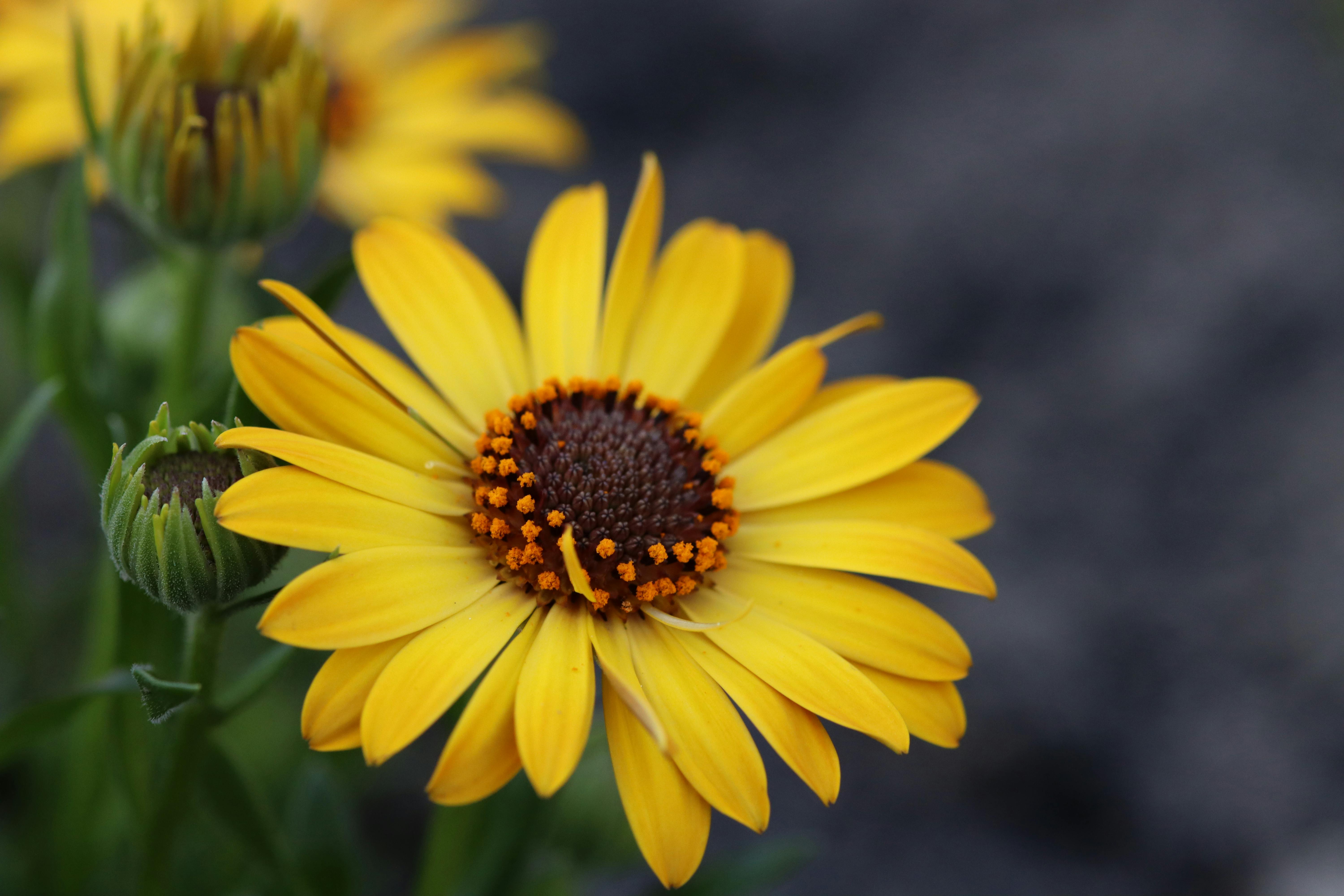👋 Click the mic button to talk to Alfred, the Todd's Seeds Gardening/Sprouting Expert – Feel free to ask him anything!
Ask Virtual Todd Anything - Click the Mic
In this article, you’ll discover some valuable tips on preventing and treating garden diseases. Whether you’re a seasoned gardener or just starting out, maintaining the health of your plants and preventing diseases is essential for a thriving garden. By understanding common signs of diseases, implementing proper sanitation practices, and using effective treatments, you’ll be equipped to keep your garden disease-free and ensure your plants flourish. So let’s dive into the world of garden diseases and explore ways to protect your beloved plants from harm!
Overview of Common Garden Diseases
Gardening is a beloved pastime for many, but it can be disheartening to see your plants succumb to diseases. Recognizing and understanding garden diseases is crucial in order to effectively prevent, manage, and treat them. In this article, we will explore the common types of garden diseases and provide comprehensive strategies and techniques to keep your garden healthy and thriving.
Identifying and Understanding Garden Diseases
Before we delve into prevention and treatment methods, it’s important to familiarize ourselves with the common types of garden diseases. Garden diseases can be caused by fungi, bacteria, viruses, or even environmental factors. Fungal diseases, such as powdery mildew and blight, are among the most common types. Bacterial diseases, like bacterial leaf spot and fire blight, can also wreak havoc on your plants. Viral diseases, such as mosaic virus and tomato yellow leaf curl, can stunt plant growth and reduce yields. Understanding these diseases and recognizing their symptoms is the first step towards effective management.

Prevention Strategies
Prevention is often the best defense against garden diseases. By implementing the following strategies, you can significantly reduce the risk of disease outbreaks in your garden.
Maintaining Proper Garden Hygiene
Good garden hygiene practices play a crucial role in disease prevention. It’s important to keep your garden clean and tidy by removing fallen leaves, debris, and any diseased plant material. Regularly sanitize your gardening tools to prevent the spread of pathogens. By practicing good garden hygiene, you minimize the opportunities for diseases to take hold and thrive.
Choosing Disease-Resistant Plant Varieties
Another effective prevention strategy is to select plant varieties that have natural resistance to common diseases prevalent in your area. Disease-resistant varieties are specifically bred to withstand or tolerate certain diseases, reducing the likelihood of infection. Take the time to research and choose plants that are known for their disease resistance to give your garden a fighting chance against pathogens.
Implementing Crop Rotation
Crop rotation is a simple yet effective technique that involves alternating plant families in different areas of your garden each growing season. This practice helps prevent the buildup of disease-causing pathogens and pests in the soil. By rotating crops, you disrupt the life cycles of pathogens and reduce the likelihood of disease transmission.
Providing Adequate Plant Spacing
Proper plant spacing allows for good air circulation and reduces the risk of disease spread. Crowded plants create a moist and humid environment that is favorable for fungal growth. By providing adequate spacing between plants, you allow for better airflow, reducing the chances of diseases such as powdery mildew and leaf spot.
Practicing Weed Control
Weeds not only compete for nutrients and resources with your plants but can also harbor disease-causing pathogens. Regular and effective weed control is vital to prevent the spread of diseases. Remove weeds promptly, as they may act as hosts for pests and diseases that can then infect your garden plants.
Maintaining Optimal Growing Conditions
Creating and maintaining optimal growing conditions for your plants is key to keeping them healthy and resilient against diseases. Consider the following factors when tending to your garden:
Ensuring Proper Soil Drainage
Many garden diseases thrive in excess moisture, so it’s essential to ensure proper soil drainage. Soggy or waterlogged soil can create conditions favorable for root rot and other diseases. Improve drainage by incorporating organic matter, such as compost, into the soil and creating raised beds or mounds for plants that require well-draining soil.
Proper Irrigation Techniques
Watering your plants correctly is important for disease prevention. Avoid overhead watering, as it can promote the spread of fungal diseases by creating a wet environment. Instead, use drip irrigation or soaker hoses to deliver water to the base of your plants. Water in the morning to allow foliage to dry throughout the day, reducing the risk of diseases such as leaf spot.
Avoiding Overcrowding
Overcrowding plants can lead to increased humidity levels and poor air circulation, creating a conducive environment for diseases to thrive. Give your plants enough space to grow and develop, allowing air to flow freely between them. Prune and thin out crowded areas to maintain optimal plant spacing.
Applying Balanced Fertilizers
Healthy plants are less susceptible to diseases, so it’s important to provide them with the nutrients they need. Use balanced fertilizers that provide essential macronutrients, such as nitrogen, phosphorus, and potassium, as well as micronutrients. Avoid over-fertilizing, as this can stress plants and make them more prone to diseases. Follow the recommended application rates and schedules for best results.

Managing Soil Health
Soil health is vital for maintaining a thriving garden and preventing diseases. By following these practices, you can improve and maintain the health of your soil:
Conducting Soil Testing
Regular soil testing is crucial for understanding the nutrient levels and pH balance of your soil. Many plant diseases can be linked to nutrient deficiencies or acid/alkaline imbalances in the soil. By conducting soil tests, you can identify and address any nutrient deficiencies or pH issues through targeted amendments.
Amending Soil pH Levels
Different plants have specific pH requirements for optimal growth. Adjusting the pH of your soil to match the needs of your plants can help prevent nutrient deficiencies and diseases. Lime can be added to raise pH levels, while sulfur or peat moss can be used to lower pH levels. Regular soil testing will guide you in determining the appropriate amendments required for your specific garden.
Proper Organic Matter Management
Incorporating organic matter into your soil improves its structure, drainage, and nutrient-holding capacity. Compost, aged manure, and other organic materials help to increase beneficial microorganisms in the soil, enhancing its overall health. Healthy soil supports healthy plants, making them more resistant to diseases.
Detecting and Monitoring Diseases
Early detection and monitoring of diseases in your garden can prevent further spread and damage. Be vigilant and take the following steps to identify and monitor garden diseases effectively:
Identifying Symptoms of Garden Diseases
Familiarize yourself with the common symptoms of garden diseases, such as wilting, discoloration, spots, patterns, or unusual growths on leaves, stems, or fruits. Stay observant and regularly inspect your plants for any changes or abnormalities. By recognizing and identifying these symptoms early on, you can take prompt action to prevent further damage.
Using Diagnostic Tools
If you’re unsure about the cause of a particular symptom, consider using diagnostic tools such as pH meters, soil moisture meters, or plant disease identification guides. These tools can help you accurately diagnose the problem and choose the most appropriate treatment or preventive measures.
Periodic Visual Inspections
Regular visual inspections are essential for monitoring the overall health of your plants. Take the time to walk through your garden and closely examine your plants for signs of diseases or pests. By catching any issues early, you can prevent the spread of diseases and implement appropriate treatments promptly.

Organic Disease Control Methods
Organic disease control methods offer environmentally-friendly and sustainable approaches to managing garden diseases. Consider the following techniques to protect your plants naturally:
Mulching as a Disease Prevention Method
Mulching around plants provides multiple benefits, including disease prevention. Organic mulches, such as straw, wood chips, or compost, act as a barrier, reducing the spread of diseases by preventing soil splash. Mulch also helps retain moisture, regulate soil temperature, and suppress weed growth. Apply a thick layer of mulch around your plants while avoiding contact with the stems to create a protective shield.
Composting for Disease Suppression
Composting is an excellent way to improve soil fertility and suppress diseases. The high temperatures generated during the composting process can eliminate many pathogens and weed seeds. Apply compost to your garden regularly to enrich the soil and boost its natural disease-fighting capabilities.
Biocontrol Techniques
Biocontrol involves the use of living organisms, such as beneficial insects or predatory nematodes, to control pests and diseases. Ladybugs, lacewings, and parasitic wasps are examples of beneficial insects that prey on garden pests. Using biocontrol techniques can help restore a natural balance in your garden, reducing the need for chemical interventions.
Using Beneficial Microorganisms
Beneficial microorganisms, such as mycorrhizal fungi and rhizobacteria, can colonize plant roots and enhance their resistance to diseases. These microorganisms establish a symbiotic relationship with plants, improving nutrient uptake and suppressing the growth of pathogenic microorganisms. Consider using inoculants containing these beneficial microorganisms to promote plant health and disease prevention.
Chemical Disease Control Methods
While organic approaches are preferable whenever possible, chemical disease control methods can be employed in severe cases. It’s important to understand the proper use and potential risks associated with chemical fungicides:
Understanding Chemical Fungicides
Chemical fungicides are substances specifically formulated to kill or inhibit the growth of fungi. They are available in various forms, including liquid concentrates, granules, and dusts. Different fungicides target different types of fungi, so it’s essential to choose the appropriate product for the specific disease you are treating.
Application Techniques
Follow the manufacturer’s instructions for proper application techniques. Some fungicides require dilution with water, while others are ready-to-use. Apply fungicides evenly, covering both the upper and lower surfaces of leaves, stems, and fruits as necessary. It’s crucial to achieve thorough coverage to maximize effectiveness.
Safety Considerations
When working with chemical fungicides, always prioritize safety. Wear protective clothing, including gloves, long sleeves, and goggles, to minimize exposure. Follow all safety precautions outlined on the product label, and store fungicides out of reach of children and pets. Properly dispose of empty containers according to local regulations.
Using Systemic and Contact Fungicides
Systemic fungicides are absorbed by the plant and translocated throughout its tissues, offering long-lasting protection. Contact fungicides, on the other hand, remain on the surface of the plant and provide immediate protection. Understand the specific characteristics and limitations of each type of fungicide to choose the most suitable option for your situation.

Treatment of Common Garden Diseases
Despite our best prevention efforts, garden diseases can still occur. Treatment methods vary depending on the type of disease:
Fungal Disease Treatment
Fungal diseases can be treated with appropriate fungicides, as mentioned earlier. To improve efficacy, it’s crucial to identify and address the underlying causes of fungal infections. Prune affected plant parts, maintain proper spacing, and ensure proper airflow around plants. Destroy and dispose of severely infected plants to prevent the spread of fungal spores.
Bacterial Disease Treatment
Bacterial diseases can be challenging to treat. Copper-based fungicides or bactericides can help in some cases, but prevention is often the best approach for bacterial diseases. Remove and destroy infected plants, and avoid overhead watering or any practices that create moisture on foliage. Maintaining good garden hygiene is particularly important when dealing with bacterial diseases.
Viral Disease Treatment
Viruses do not have a cure, so prevention and management are key. Remove and destroy infected plants, as viruses can spread through insect vectors or contaminated tools. Planting disease-resistant varieties is crucial for preventing viral infections. Implement pest control measures to reduce insect populations, as they can transmit viruses from plant to plant.
Promoting Plant Health
Healthy plants are more capable of resisting diseases, so it’s important to prioritize their overall health and well-being. Consider the following practices to promote plant health:
Proper Pruning Techniques
Regular pruning helps maintain the structure and health of your plants. Remove dead or diseased branches to prevent the spread of diseases. Proper pruning techniques also enhance airflow and light penetration, reducing the risk of fungal infections. Take care to use sterile pruning tools to avoid transferring diseases between plants.
Strengthening Plants’ Immune Systems
Just like humans, plants have immune systems that can be enhanced. Providing optimal growing conditions, such as proper nutrition, adequate water, and sufficient sunlight, strengthens plants’ natural defense mechanisms. Avoid overusing pesticides, as it can disrupt the balance of beneficial organisms that contribute to plant health. By nurturing plants’ immune systems, you equip them to better fend off potential diseases.
Providing Adequate Nutrients
Nutrient deficiencies can weaken plants and make them more susceptible to diseases. Ensure your plants receive balanced and sufficient nutrients through regular fertilization. Organic amendments, such as compost and organic fertilizers, offer slow-release nutrients that improve soil health and support plant growth. Regular soil testing will guide you in providing the appropriate nutrients for your plants’ needs.

Integrated Pest Management techniques
Pests and diseases often go hand in hand, as pests can create entry points for pathogens and transmit diseases. Integrated Pest Management (IPM) is a holistic and environmentally-friendly approach that combines various strategies to prevent and control pest infestations:
Understanding the Connection between Pests and Diseases
Recognize the interdependence between pests and diseases in your garden. Integrated Pest Management takes into account the indirect impact pests have on disease development and transmission. By addressing pest issues effectively, you can indirectly reduce the risk of disease outbreaks.
Preventing and Controlling Pest Infestations
Implement preventive measures to minimize pest populations and their impact on your garden. Use physical barriers such as row covers or insect netting to keep pests out. Encourage natural predators, such as ladybugs and birds, to help control pest populations. Employ organic pest control methods, such as insecticidal soaps or neem oil, when necessary.
By adopting a holistic approach to pest management, you create a balanced ecosystem within your garden, reducing the chances of disease outbreaks and promoting the overall health and vitality of your plants.
In conclusion, prevention is the key to maintaining a disease-free garden. Through proper garden hygiene, optimal growing conditions, soil health management, detection, and monitoring, as well as the use of organic and chemical disease control methods, you can effectively prevent, manage, and treat garden diseases. By promoting plant health and implementing integrated pest management techniques, you can create a thriving and resilient garden that is less susceptible to diseases. Remember to stay observant, stay proactive, and provide your garden with the care it needs to flourish. Happy gardening!